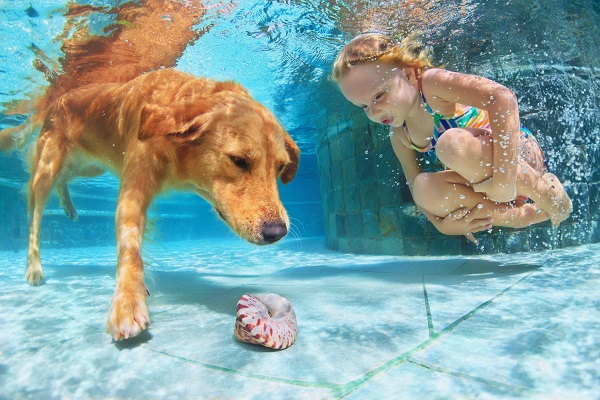Is the pool water clean enough? “Clean enough” isn’t really what you’re shooting for, the swimming pool service contractors from Seahorse Pools and Spas in Fort Worth, Texas explain. You want the pool and spa water to be as clean as it possibly can. Clean enough — can lead to bacteria and algae growth, red eyes, dry skin and potential problems with the pool equipment.
You may wonder: does the strong smell of chlorine coming from my pool mean there is too much chlorine or not enough chlorine or neither of those? How much chlorine should be in the pool? It’s not a one size fits all answer and that’s why many pool owners find it difficult to balance the pool water chemistry on their own and rely on the services of a pool contractor.
Is the pool water clean enough?
Enough chlorine — means you need sufficient levels to kill microorganisms that cause disease. Chlorine’s effectiveness can be affected by temperature, pH levels, and different forms of contamination. Recommended levels are: pH level at 7.2 to 7.8 in order for the pool sanitizer (chlorine) to do its job.
Here are chlorine terms you need to know:
- Free chlorine
- Combined chlorine
- Total chlorine
Free chlorine is the chlorine available at any given time to disinfect the water. Free chlorine levels should be maintained at between 2.0 and 4.0 ppm (parts per million). The minimum should not drop below 1.0 ppm and the maximum should not exceed 5.0 ppm.
When you smell chlorine — that doesn’t mean the water is clean — in fact it means there are too many total dissolved solids. When you smell chlorine it usally means there is a reaction of free chlorine interacting with ammonia or organic compounds from sweat, urine or other sources from nature. This interaction is then called combined chlorine or chloramines.
How can you get rid of it and get the chemicals back in proper balance? You will have to shock or super-chlorinate. When you do this you’re adding free chlorine at ten times the amount of combined chlorine. If the chloramines are organic, they cannot be removed by breakpoint chlorination.
Other methods must be used such as clarifiers added to the water, ozone treatment, or replacing the pool water with fresh water. The ideal amount of combined chlorine is zero. The max reading should be no more than .2 to .5 ppm.
Total chlorine is simply the free chlorine and combined chlorine added together.
Keep in mind that chlorine is an unstable element and its effectiveness can be impacted by sunlight and that’s why pool service pros recommend adding a chlorine stabilizer (cyanuric acid) to act as a “sun block” to maintain chlorine levels. The ideal amount of cyanuric acid should be 30-50 ppm.
As you’ll see, caring for a pool and checking and testing levels of chemicals is a delicate balancing act and that’s why many pool owners leave it to the pros — in fact, many pool owners find it’s less expensive to hire a pool pro than it is to maintain the pool themselves.

